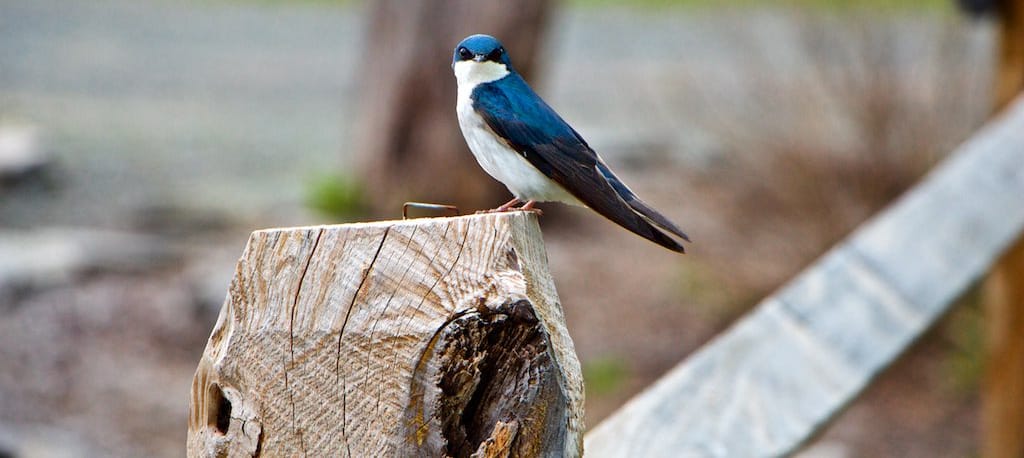Share this article
Remote-controlled device helps trap box-nesting birds
Wildlife managers can now capture birds by trapping them inside their nests using a remote-controlled device similar to a garage door opener.
Dave Shutler, TWS member and a biology professor at Acadia University in Nova Scotia, Canada, had been frustrated in his attempts to capture tree swallows (Tachycineta bicolor) since his first research project about two decades ago tracking effects of pesticides on birds in orchards. Back then, they used a simple trap with a closing flap propped open by a stick inside of nest boxes. The researchers would wait until a bird entered and dislodged the supporting stick. While they could capture females fairly easily using this method, capturing male birds presented a serious problem because they were often spooked by the presence of a visible prop.
It would be so much easier, Shutler thought, if they had a trap “that didn’t freak out the males,” but he didn’t think he could put together something like that himself. “I’m not an electrical engineer or anything close. I get nervous near batteries.”
He didn’t get the chance to put this idea into practice until Cardy Hallett Saunders, a biology student with a penchant for repairing equipment, joined the other researchers while trapping birds. Shutler mentioned his idea of building a remote-controlled nest box, and Saunders said he could probably help.
Saunders had soon developed a small device that would facilitate Shutler’s research. It involved fitting a receiving unit with a battery on the ceiling of the nest box connected to a spring-loaded flap activated by a remote control that could be used up to 150 feet away. When researchers pressed the button on the remote control, the flap would come down like a garage door, blocking the entrance of the hole in the nest box. They described this device and its ability to trap birds recently in a study published in the Journal of Field Ornithology.
Shutler said this allowed the researchers to capture more males than the prop traps since they didn’t get frightened by the stick, and also helped trap both females and males more quickly.
“There’s nothing worse than standing outside in an orchard for an hour when you’ve got 10 other boxes you’re supposed to trap,” he said, adding that they can now catch birds in half the time.
The speed and efficiency helped them analyze the swallows for parasites, figure out their identity, how far they disperse from their original nest and whether they had reproductive success.
He said that the traps would have been invaluable in a larger project involving the use of geolocators on swallows. Once recovered, these devices have told Shutler and his colleagues all kinds of information about where the birds have been across their wide range from Nova Scotia to British Columbia and in the U.S.
Header Image: A tree swallow stands alert on a fence post. Researchers have designed a simple device to trap these birds more easily in their nests for monitoring purposes. ©Dan Tew








